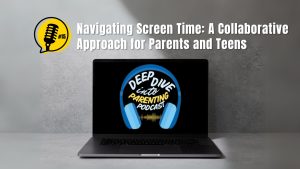Last week, a student at Lone Hill Middle School in San Dimas received several threats from an Instagram account that stated "we plan to kill her." Seven individuals claimed that they wanted to kill the student and said, "This week we plan on fighting" and "This week we kill." I posted a link to the news story below.
These types of criminal threats on Instagram are not new. When a child is interacting on a social network like Instagram, they are vulnerable to these kinds of attacks. For parents of children who are using Instagram, or who are thinking about allowing their children to use social media, I have several important suggestions to keep your child safe:
Step 1 - Social Media (Yes or No?)
Knowing when to allow a child to enter the social media culture can sometimes be a difficult decision. All studies and polls agree that social media (Kik, Instagram, Facebook, etc.) are teenagers’ preferred method of connecting with friends, even when they are sitting in the same room together.
If your child is under the age of thirteen, most social media sites’ end user agreements have made it easy for parents on the fence of allowing their ten year-old on Instagram. Children under thirteen are not allowed to have social media accounts. Sure a parent could still set up their account, but they run the risk of sending the wrong message to their children: Rules don’t matter. If the website’s rules don’t matter, why should our family’s rules for the Internet matter?
If a parent thinks their child is mature enough to have a social media account, they must address the issue of cyberbullying and digital reputation. The permanency and unforgiving nature of social media is a difficult concept for children to understand. Children must understand that every post, picture, or comment made on the Internet is potentially permanent. Inappropriate posts or photos can have lifelong consequences and damaging lives and reputations forever. The recent arrest of two Florida girls whose alleged cyberbullying drove twelve-year-old Rebecca Sedwick to commit suicide is a fresh reminder of this. Before a teen presses the send button, they should be asking themselves, “Would my Mom or Dad be okay with this post?”
Parents need to teach their children two simple but critical concepts: First, treat others online the way you want to be treated offline. Second, everything posted online is a permanent reflection of you. Don’t post anything that you would not be comfortable with your parent reading.
Step 2 – Set expectations and open lines of communication.
First, parents need to understand that they are the sole own er of their child’s device. The parent is merely letting the child borrow it. The parent should explain to their child that they should have no expectation of privacy when it comes to their devices, the stakes are just too high to leave it up to them.
Second, parents need to start an on-going conversation with their child. One of the best tools to set expectations and start the conversation is an Internet Usage Contract. I have created a contract that parents can download. Parents should sit down with their child and read together each point of the contract. Each point of the contract should be a springboard for a discussion about cyber safety.
Step 3 - Enable parental controls.
You can find parental controls on iOS (Apple) devices in Settings > General > Restrictions. Here, parents can manage some of the apps that come with the device, such as Safari (web browser), iTunes Store, and the dreaded In-App Purchase. Depending on the child’s age, some parents may not want them to have Internet access. Lastly, you can adjust the “Privacy” for the device. Most notable here is “Location Services.” When enabled, this allows various apps to use the device’s GPS antenna. For example, if Location Services is enabled for the Camera, every photo snapped will have a GPS location from where it was taken. If you post that photo online, anyone who knows how to find this data will know exactly where it was taken. This could raise security concerns with regards to stalking or abduction.
Parents must protect the Restriction’s password from their child, as well as the iTunes password. Parents should be the gatekeeper to all of the apps that are installed on their child’s device. I suggest parents use review sites for parents, like www.commonsensemedia.org, to research the app that their child is asking for.
Step 4 - Stop and physically check what's on the device.
In step 2, we established that the child has no expectation of privacy. Therefore, they should not be too shocked when you take their mobile device out of their hands, mid text message, and start reading everything that is being posted on their accounts and text messaging. This is important to build accountability in your child's life.
Step 5 - Be aware of dangerous apps that are wildly popular with teens.
I have written a blog article outlining the most worrisome apps here.
The steps outlined above are only the first, but positive steps to help create a safe environment for teens online. There are no silver bullets. Real security is a multi-layered approach. No one single measure will cover all the bases, but overlapping security structures will provide a relatively safe (but not perfectly safe) environment. I tell my parents that cyber safety is a moving target. We need to be vigilant as parents and unafraid to delve into our children’s lives.
http://losangeles.cbslocal.com/2015/04/14/instagram-account-threatens-san-dimas-student-we-plan-to-kill-her/







